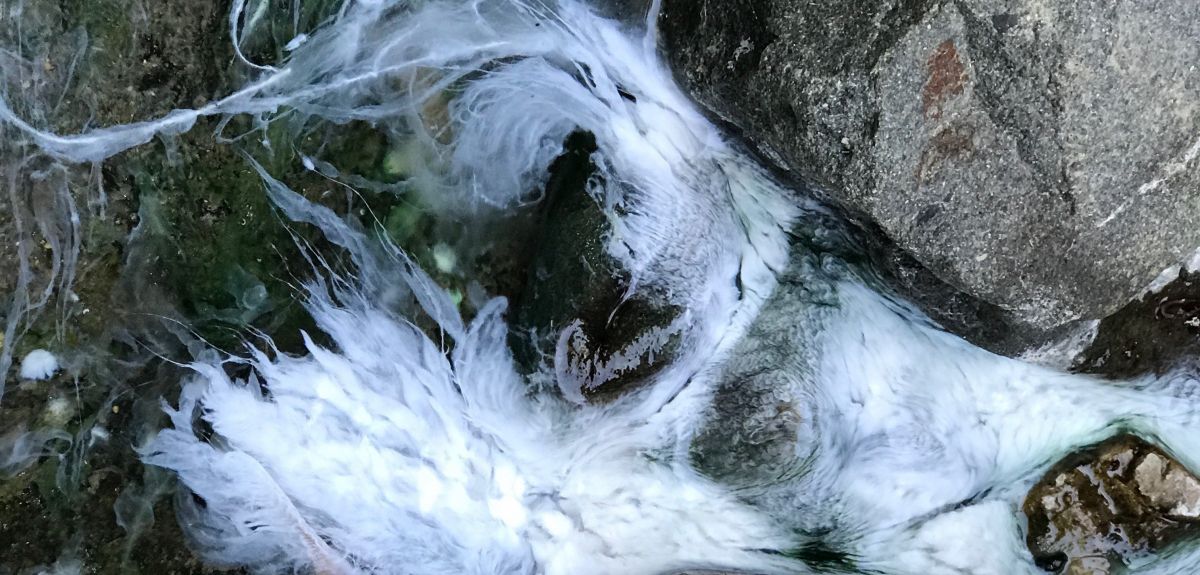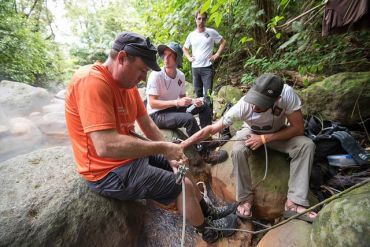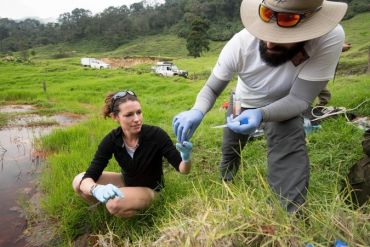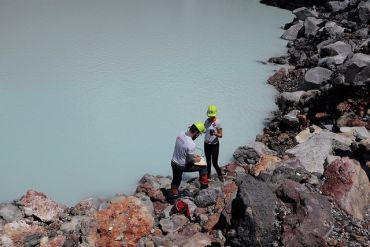
Credit: Peter Barry
Microbes may act as gatekeepers of Earth’s Deep Carbon
Two years ago a team of scientists visited Costa Rica’s subduction zone, where the ocean floor sinks beneath the continent and volcanoes tower above the surface. They wanted to find out if microbes can affect the cycle of carbon moving from Earth’s surface into the deep interior. According to their new study in Nature, the answer is affirmatively - yes they can.
This groundbreaking study, published in Nature, shows that microbes consume and – crucially – help trap a small amount of sinking carbon in this zone. This finding has important implications for understanding Earth’s fundamental processes and for revealing how nature can potentially help mitigate climate change.
At a subduction zone there is communication between Earth’s surface and interior. Two plates collide and the denser plate sinks, transporting material from the surface into Earth’s interior. Showing that the microbes at the near-surface are playing a fundamental role in how carbon and other elements are being locked up into the crust provides a profound new understanding of Earth processes and helps researchers model how Earth’s interior may develop over time.
Co-author, Professor Chris Ballentine, Head of the Department of Earth Sciences at the University of Oxford, said: ‘What we’ve shown in this study is that in areas that are critically important for putting chemicals back down into the planet – these big subduction zones – life is sequestering carbon. On geological timescales life might be controlling the chemicals at the surface and storing elements like carbon in the crust.’
Lead author, Dr Peter Barry, who carried out the research while at the Department of Earth Sciences, Oxford University, said: ‘We found that a substantial amount of carbon is being trapped in non-volcanic areas instead of escaping through volcanoes or sinking into Earth’s interior.
‘Until this point scientists had assumed that life plays little to no role in whether this oceanic carbon is transported all the way into the mantle, but we found that life and chemical processes work together to be the gatekeepers of carbon delivery to the mantle.’
Watch a video about the expedition
Following their analyses, the scientists estimated that about 94 percent of that carbon transforms into calcite minerals and microbial biomass.
Senior author, Karen Lloyd, Associate Professor of Microbiology at the University of Tennessee, Knoxville, said: ‘These microbes are literally sequestering carbon. Scientists are actively working on carbon sequestration to mitigate climate change and carbon capture and storage as a means to bury greenhouse gases over long time periods. Our study is a really good example of where this is happening naturally, and it was previously unrecognised. This study shows that this happens on a big, reservoir scale.’
The researchers now plan to investigate other subduction zones to see if this trend is widespread. If these biological and geochemical processes occur worldwide, they would translate to 19 percent less carbon entering the deep mantle than previously estimated.
Co-author Donato Giovannelli, Assistant Professor at the University of Naples Federico II and affiliated scientist at the CNR-IRBIM and Rutgers University, said: ‘There are likely even more ways that biology has had an outsized impact on geology, we just haven’t discovered them yet.’
Dr Peter Barry, now an Associate Scientist at Woods Hole Oceanographic Institution, added: ‘We have people from three different fields working together and only with such an interdisciplinary approach can you make such breakthroughs. Moving forward, this will change how people look at these systems. For me that is thrilling.’
The research is part of the Deep Carbon Observatory’s Biology Meets Subduction project. The interdisciplinary team included 25 researchers from six nations belonging to each of the Deep Carbon Observatory (DCO) Science Communities: Deep Life, Extreme Chemistry and Physics, Reservoirs and Fluxes, and Deep Energy.



 Oxford launches first human aerosol TB challenge trial
Oxford launches first human aerosol TB challenge trial
 Rees Centre report reveals challenges faced by Black and Asian kinship carers
Rees Centre report reveals challenges faced by Black and Asian kinship carers
 Expert Comment: The Modern Slavery Act at 10 – what have we learnt for human rights?
Expert Comment: The Modern Slavery Act at 10 – what have we learnt for human rights?